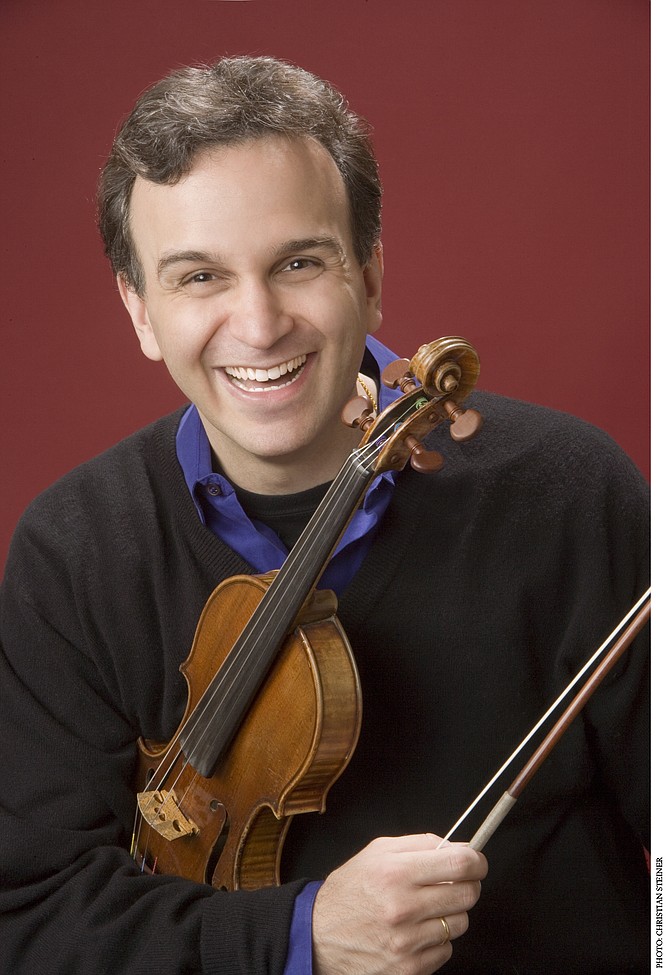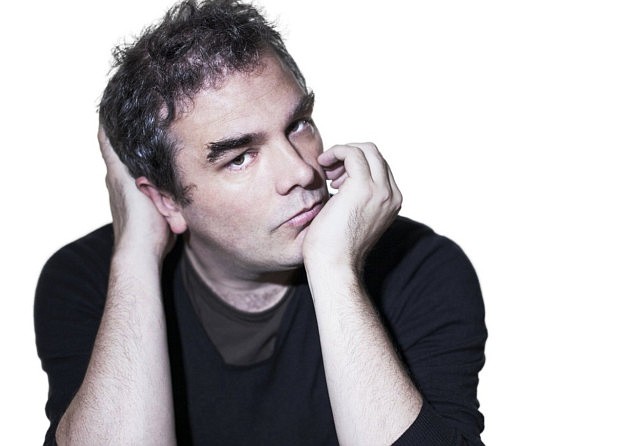 Facebook
Facebook
 X
X
 Instagram
Instagram
 TikTok
TikTok
 Youtube
Youtube

An old man sitting behind me said, "Gil Shaham is good" to the lady accompanying him. God help me to stop being that guy. If we ever go to a concert together and I try to tell you what is good beforehand, throw your drink in my face or punch me in the nose, or, perhaps, ask me to let you form your own opinion and to trust that an artist such as Gil Shaham will be able to prove his goodness, even to the uninitiated.
It’s a pet peeve and I am getting better at allowing other people to exist but if you’re going to guide someone’s experience try a little harder than “Gil Shaham is good.”
Now, after the performance I get to tell you everything I thought, which is what we’re doing here with this little rundown of the San Diego Symphony’s performance of December 14, 2014.
Gil Shaham is good. He is also the violinist of my youth even though we're about the same age. I was working at Tower when his Barber Violin Concerto came out paired with the Korngold. I still listen to it. Yes, I got it for free as a promo from the Polygram rep. No, I’m not sure who owns Deutsche Grammophon these days, neither shall I Google it.

Shaham’s Four Seasons had a fancy piece of technology known as a CD-ROM — which my phone's text predictor doesn't recognize as “a thing.” He also recorded Bruch and Mendelssohn with Sinopoli before Sinopoli expired.
I’m getting carried away. Before Gil Shaham we had three Bach preludes arranged for orchestra. The first of which set the tone for the entire concert in my small corner of consciousness. It was subdued and, dare I say, contemplative? Yes, I dare.
The world premiere violin concerto by David Bruce was amazing. I did my thing and refused to read the program until after the performance. I don’t want to know anything about a new piece of music until after I hear it.
The first two movements of the concerto were uptempo. Not quite “tempo da tearass” but close at times. Gil Shaham appeared to be enjoying himself. Good, good. At the conclusion of the second movement I thought, “Hmm, no fast-slow-fast. Maybe we get to end with slow? I think I like that.”
I didn’t like it. How can you like something that changes your perception of what music is capable of? It’s beyond “like,” it’s beyond “love.” As the piece concluded the strings gradually played higher and higher until they had no tone left — until they ran out of string but they continued to bow on without any pitch.
The effect created the sound of an exhalation. The violins were the last to go, which left Gil Shaham playing the most infinitesimal of pitches. He too succumbed to the limits of his instrument and the music evaporated. It was as if we were witnessing someone releasing their very life to us.
It took me deep. I mean, I was close to losing it then and there. I’m not sure where I was headed but it was a place I’ve never been to before with music.
I’ve had to pull over because I couldn’t see the road through my tears during Butterfly’s entrance music or during the piano playout at the end of Dichterliebe but this was something altogether more intense than those beautiful sounds.
As I was being guided toward enlightenment, a different old man says, in his best loud-whisper, “Straaaange.”
What’s strange is that I didn’t stand up and choke him out to his next life.
Perhaps David Bruce’s music released some of my self importance and anger. I was in my subjective experience and this other person was in his. It’s impossible to say that one is right and the other wrong.
The overwhelming spirit of peaceful release stayed with me. I started to consider what this music could be releasing.
It could be anything. It could be a life. It could be a love or an addiction. It could be a dogma or a pet peeve. It could be a state of releasing everything, a state of non-attachment. I can’t say.
What I can say is that this piece of music will have ramifications. Even taking the trash can out to the curb is going to be different tomorrow morning.
I’ll speak of Rachmaninoff and his Second Symphony another time.


An old man sitting behind me said, "Gil Shaham is good" to the lady accompanying him. God help me to stop being that guy. If we ever go to a concert together and I try to tell you what is good beforehand, throw your drink in my face or punch me in the nose, or, perhaps, ask me to let you form your own opinion and to trust that an artist such as Gil Shaham will be able to prove his goodness, even to the uninitiated.
It’s a pet peeve and I am getting better at allowing other people to exist but if you’re going to guide someone’s experience try a little harder than “Gil Shaham is good.”
Now, after the performance I get to tell you everything I thought, which is what we’re doing here with this little rundown of the San Diego Symphony’s performance of December 14, 2014.
Gil Shaham is good. He is also the violinist of my youth even though we're about the same age. I was working at Tower when his Barber Violin Concerto came out paired with the Korngold. I still listen to it. Yes, I got it for free as a promo from the Polygram rep. No, I’m not sure who owns Deutsche Grammophon these days, neither shall I Google it.

Shaham’s Four Seasons had a fancy piece of technology known as a CD-ROM — which my phone's text predictor doesn't recognize as “a thing.” He also recorded Bruch and Mendelssohn with Sinopoli before Sinopoli expired.
I’m getting carried away. Before Gil Shaham we had three Bach preludes arranged for orchestra. The first of which set the tone for the entire concert in my small corner of consciousness. It was subdued and, dare I say, contemplative? Yes, I dare.
The world premiere violin concerto by David Bruce was amazing. I did my thing and refused to read the program until after the performance. I don’t want to know anything about a new piece of music until after I hear it.
The first two movements of the concerto were uptempo. Not quite “tempo da tearass” but close at times. Gil Shaham appeared to be enjoying himself. Good, good. At the conclusion of the second movement I thought, “Hmm, no fast-slow-fast. Maybe we get to end with slow? I think I like that.”
I didn’t like it. How can you like something that changes your perception of what music is capable of? It’s beyond “like,” it’s beyond “love.” As the piece concluded the strings gradually played higher and higher until they had no tone left — until they ran out of string but they continued to bow on without any pitch.
The effect created the sound of an exhalation. The violins were the last to go, which left Gil Shaham playing the most infinitesimal of pitches. He too succumbed to the limits of his instrument and the music evaporated. It was as if we were witnessing someone releasing their very life to us.
It took me deep. I mean, I was close to losing it then and there. I’m not sure where I was headed but it was a place I’ve never been to before with music.
I’ve had to pull over because I couldn’t see the road through my tears during Butterfly’s entrance music or during the piano playout at the end of Dichterliebe but this was something altogether more intense than those beautiful sounds.
As I was being guided toward enlightenment, a different old man says, in his best loud-whisper, “Straaaange.”
What’s strange is that I didn’t stand up and choke him out to his next life.
Perhaps David Bruce’s music released some of my self importance and anger. I was in my subjective experience and this other person was in his. It’s impossible to say that one is right and the other wrong.
The overwhelming spirit of peaceful release stayed with me. I started to consider what this music could be releasing.
It could be anything. It could be a life. It could be a love or an addiction. It could be a dogma or a pet peeve. It could be a state of releasing everything, a state of non-attachment. I can’t say.
What I can say is that this piece of music will have ramifications. Even taking the trash can out to the curb is going to be different tomorrow morning.
I’ll speak of Rachmaninoff and his Second Symphony another time.
Comments